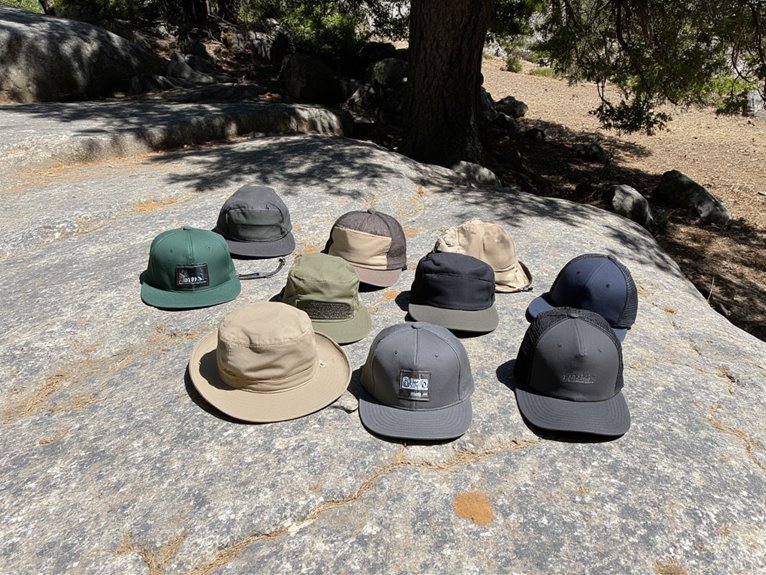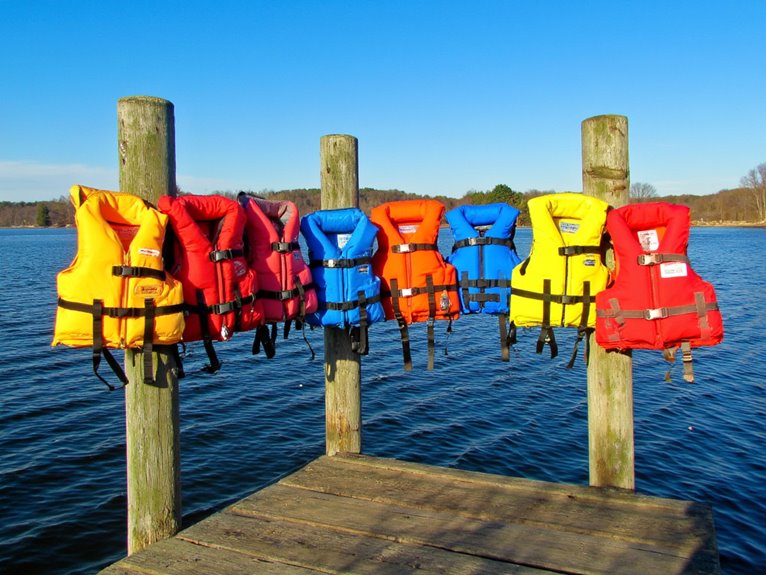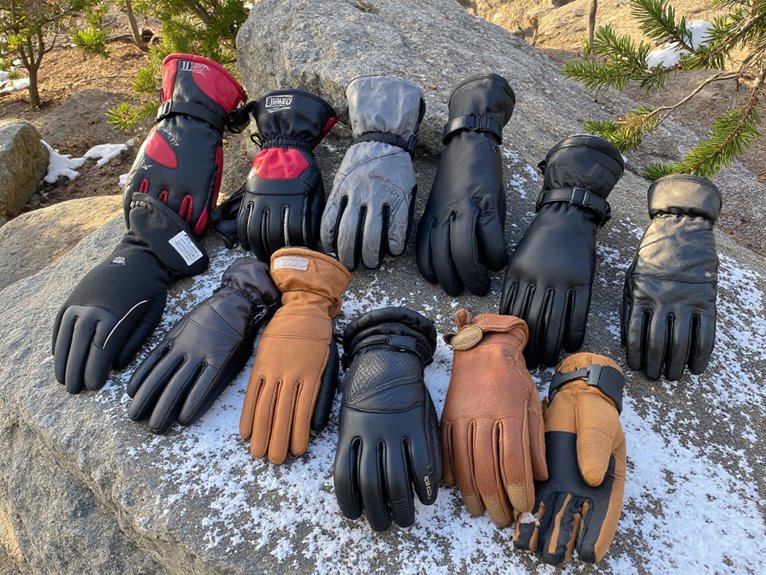Are Panniers Ok for Bikepacking?
Panniers can be a viable option for bikepacking, offering a structured approach to carrying gear with a focus on organization and accessibility. However, their suitability depends on the type of terrain and riding style. Panniers are ideal for paved roads and bike paths, providing ample storage space and easy access to gear. But for off-road adventures, bikepacking bags may be a better choice, prioritizing streamlined design and aerodynamics. While panniers can work for bikepacking, careful selection and packing are vital to a successful trip. To better understand the nuances of using panniers for bikepacking, examine the key considerations and factors that influence their performance.
We are supported by our audience. When you purchase through links on our site, we may earn an affiliate commission, at no extra cost for you. Learn more. Last update on 1st January 2026 / Images from Amazon Product Advertising API.
Panniers Vs. Bikepacking Bags
When it comes to carrying gear on a bicycle, cyclists often find themselves torn between panniers and bikepacking bags, two popular options that cater to different needs and riding styles.
Panniers, traditionally used for commuting and touring, offer a more structured approach to carrying gear, with a focus on organization and accessibility.
Bikepacking bags, on the other hand, are designed for off-road adventures, providing a more streamlined and aerodynamic solution for carrying essentials.
While panniers are ideal for paved roads and bike paths, bikepacking bags excel in rugged, technical terrain.
Storage Capacity and Accessibility
In terms of panniers for bikepacking, storage capacity and accessibility are vital considerations.
A well-designed pannier should provide ample storage space, organized compartments, and intuitive access to gear, ensuring that riders can quickly and easily retrieve what they need on the go.
In this regard, key features such as easy access design, spacious compartment options, and efficient packing systems become essential for a seamless bikepacking experience.
Easy Access Design
A well-designed pannier with an easy access system allows for effortless retrieval of gear, even on the go, while maintaining a generous storage capacity to accommodate all the essentials for a comfortable and enjoyable bikepacking experience.
This thoughtful design feature enables riders to quickly grab what they need without having to remove the entire pannier from the bike.
Easy access pockets and compartments are strategically placed to provide rapid access to frequently used items, such as snacks, tools, or a first-aid kit.
This design aspect is particularly valuable for bikepackers who need to respond quickly to changing weather conditions or address mechanical issues on the fly.
Spacious Compartment Options
Riders can opt for panniers with multiple spacious compartments, strategically designed to maximize storage capacity while maintaining ease of access to their gear.
This design allows for organized storage, keeping essential items separate and within reach.
Separate compartments can be dedicated to specific gear, such as clothing, tools, or electronics, ensuring everything has its designated place.
This thoughtful design enables riders to quickly locate and retrieve items, saving time and minimizing disruptions during their journey.
Additionally, multiple compartments help distribute weight evenly, reducing the risk of wear and tear on the pannier and bike.
Efficient Packing Systems
Optimizing storage capacity and accessibility is vital in bikepacking panniers, as it directly impacts the efficiency of the packing system and, ultimately, the rider's overall experience.
A well-designed pannier should provide ample storage space while allowing easy access to essential items. This balance is essential for bikepackers who need to quickly retrieve gear on the go.
To achieve efficient packing systems, consider the following key features:
Modular compartments: Separate pockets and compartments help organize gear and prevent a jumbled mess.
Roll-top closures: Allow for easy access and compression of contents.
External pockets: Provide quick access to frequently used items.
Compression straps: Enable riders to cinch down the load and maintain a slim profile.
Weight Distribution and Balance
Proper weight distribution and balance are critical considerations when loading panniers for bikepacking, as unevenly distributed weight can substantially impact the bike's handling and stability.
A balanced load guarantees the bike remains stable and responsive, making it easier to navigate varied terrain.
To achieve ideal weight distribution, distribute heavier items, such as tools and camping gear, towards the bottom of the panniers and closer to the bike's center of gravity.
Lighter items, like clothing and sleeping bags, can be placed towards the top.
Additionally, consider the bike's suspension travel and confirm the panniers do not interfere with its movement.
Protection From the Elements
When venturing into the wilderness, exposure to harsh weather conditions is inevitable, making it essential to select panniers that provide adequate protection from the elements.
Panniers designed for bikepacking should be made of water-resistant materials, such as nylon or polyester, to ensure gear remains dry in rainy or snowy conditions.
To ensure optimal protection, look for panniers with the following features:
- Water-resistant zippers to prevent water from seeping in.
- Seam-sealed construction to prevent water from entering through stitching.
- Breathable materials to reduce condensation buildup.
- Rain covers or built-in ponchos for added protection during heavy downpours.
Durability and Maintenance Needs
A bikepacking pannier's durability and low maintenance needs are crucial considerations, as a faulty or high-maintenance pannier can be a liability on long, self-supported trips.
Panniers constructed from durable materials, such as nylon or polyester, can withstand the rigors of bikepacking. Look for reinforced seams, sturdy zippers, and secure attachment systems to safeguard your gear remains safe and dry.
Additionally, consider panniers with water-resistant coatings or waterproof liners to protect your belongings from the elements.
When choosing a pannier, prioritize those with easy-to-clean designs and minimal moving parts to reduce maintenance needs.
Cost Comparison and Value
When evaluating panniers for bikepacking, it's essential to weigh the cost comparison and value proposition.
The price points of panniers vary widely, ranging from budget-friendly options to premium models with advanced features.
To determine the best value, a packing value analysis is necessary, which involves evaluating the capacity, durability, and features of each pannier in relation to its cost.
Pannier Price Points
Pannier prices vary widely, ranging from under $50 for basic, no-frills models to over $500 for high-end, feature-rich designs, making it essential to understand the cost-benefit tradeoffs to get the best value for your bikepacking needs.
Some general price points to expect are:
- Basic: $20-$50 – Simple, compact designs with limited features.
- Mid-range: $50-$150 – Balanced blend of features, durability, and affordability.
- Premium: $150-$300 – High-quality materials, advanced features, and robust construction.
- Elite: $300-$500 – Top-tier materials, advanced features, and exceptional craftsmanship.
When evaluating pannier prices, consider factors like durability, water resistance, and feature sets to maximize your investment and get the best value for your bikepacking adventure.
Packing Value Analysis
Frequently, bikepackers find themselves weighing the costs and benefits of different pannier options, seeking the perfect balance of features, quality, and affordability.
A thorough packing value analysis is essential in determining the best pannier for your bikepacking needs.
When evaluating panniers, consider the cost per liter of storage capacity, as well as the durability and water resistance of the material.
Additionally, consider the weight and bulk of the pannier, as well as any additional features such as pockets, compartments, and attachment systems.
Off-Road Capabilities and Limitations
Cyclists venturing into off-road territories must carefully weigh the pannier system's capacity to navigate rugged terrain, as the added weight and bulk can substantially impact the bike's handling and stability.
When tackling technical trails, panniers can affect the bike's agility and maneuverability, making it more challenging to navigate obstacles.
Key limitations to bear in mind:
Reduced ground clearance: Panniers can decrease the bike's ground clearance, increasing the risk of scraping or damaging the luggage or bike frame.
Impaired balance and agility: The added weight and bulk of panniers can affect the bike's balance and agility, making it more difficult to navigate tight trails and technical sections.
Increased risk of damage: Panniers can be prone to damage from rough terrain, and the added weight can put additional stress on the bike's frame and components.
Compromised suspension performance: The weight of panniers can affect the bike's suspension performance, reducing its ability to absorb shock and maintain traction.
Real-World Examples and User Feedback
While traversing off-road terrain with panniers requires careful consideration of their limitations, many bikepackers have successfully adapted to these challenges, and their experiences offer valuable insights into the practical applications of pannier systems.
Real-world examples abound, such as bikepacker Joe Cruz's 2,700-mile journey along the Continental Divide Trail, where he utilized custom-made panniers to carry his gear.
Cruz praises the panniers' durability and accessibility, citing their ease of use and organization.
In the same vein, bikepacker Rachel Horn's experiences on the Arizona Trail have demonstrated the feasibility of panniers for multi-day off-road excursions.
These user feedback examples underscore the importance of careful pannier selection, packing, and route planning to guarantee a successful bikepacking trip.



